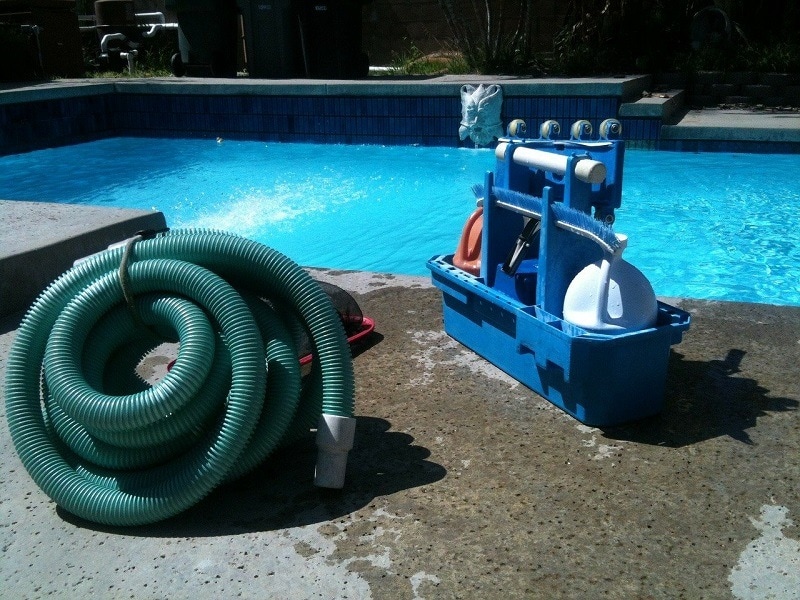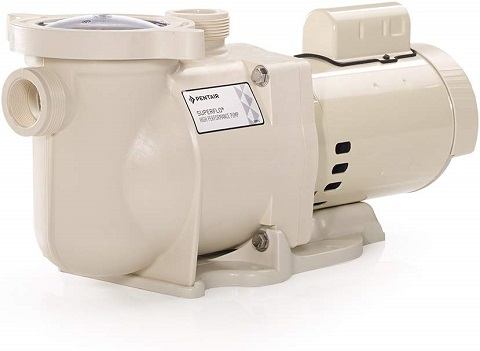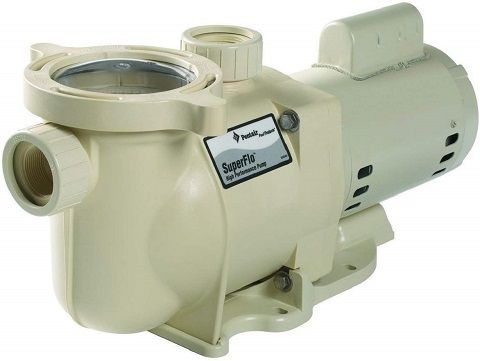3 Different Types of Pool Pumps: Which One’s Best?
-
Pete Ortiz
- Last updated:

Having the right pool pump can make or break the cleanliness and swim ability of your swimming pool. Choosing a pump for your pool can sometimes be a difficult decision, and each type has its positives and negatives. The three basic types of pool pumps are the Single Speed, the Two Speed, and the Variable Speed. Now, let’s get you up to speed on all three of these pumps.
The 3 Types of Pool Pump
1. Single Speed

As its name implies, the single-speed pump only works at one speed. What speed does it work at? Full speed. The single-speed pump can only work at high speed the entire time that it is on. The single-speed pump is the cheapest of the three different models. Single-speed pumps, although more affordable initially, are not energy efficient and can cost more long-term to maintain.
- Cheaper to purchase
- Can cause issues in saltwater pools
- Higher energy costs
- Less efficient
- No adjustability in flowrate
- More hours with stagnant water
2. Two Speed

Unlike the single speed pump, the dual-speed is somewhat adjustable. Dual speed pumps have both a high and a low setting. The dual-speed pump is most commonly used in spas.
- Somewhat adjustable with a high and low setting
- Can save some money from the single speed but not much
- The low speed will not work to run the pool vacuum
- Requires programming to be more energy efficient
- The high speed is still very high and not efficient
3. Variable Speed Pump

Variable Speed pumps are the most expensive to purchase initially, but they are the cheapest to run long term. You will have to decide where it makes more sense for you to spend your money, but we highly recommend giving the variable speed pump a good look.
The best way to provide the highest level of circulation and filtration to your pool water it to go with a variable speed pump.
They are extremely energy efficient. By adequately programming your variable speed pump, you can spend the same amount of money on electricity in 24 hours as you would in 6 or 8 hours with a single-speed pump.
Running a pool filter for a more extended period without adding any increased energy costs is exceptionally beneficial. Not only will your pool water be cleaner, but your water will not be left sitting still. When water stays stagnant, algae and other issues will arise.
Saltwater pools are most efficient when connected with a variable speed pump. When using a variable speed pump, salt production can be turned down, reducing the wear and tear on the salt cell.
A variable speed pump is almost entirely enclosed, and it is also fan-cooled. These two factors will help it last longer. With the higher initial price, this can be a great benefit. Keep in mind that because the pump is enclosed, it will also be quieter. Less pump noise is not something pool owners are going to complain about.
- Extremely energy efficient
- Some areas offer rebates on the purchase of variable speed pumps because of energy savings
- Highly adjustable
- Can program to work for more time and spend less
- Works great for saltwater pools
- Quieter
- Installation is not more complicated than single
- Higher initial costs
Which One Is Best?
It doesn’t take too much investigation to see that the list of pros for the variable speed pump is quite a bit longer than the single-speed and dual-speed. IF you are in the situation of having to replace your pump, this is a time that spending a bit more money upfront can make a world of difference in your pool maintenance.
The ability to run a filter for a more extended period without costing you more money is a tremendous benefit. Another thing we love about the variable speed is that if your pool is not located in a full sun area that tends to burn off chemicals quickly, you can run it on medium or slow speeds almost continuously. This can severely lower your energy bill and prove that you have likely been wasting money and energy for years using a single speed.
In Conclusion
Many of our reviews and recommendations will encourage you to choose what works best for you and your pool. When it comes to pool pumps, we have a strong opinion. Variable speed is the way to go.
If you can’t afford a variable speed, at least try to go with the two-speed pump, do whatever you can to stay away from the single speed. Variable speed pool pumps are the future, and you might as well hop on for this ride now. Your electric bill will thank you!
See also:
Featured Image Credit: southbaypoolservices, Pixabay
Contents


